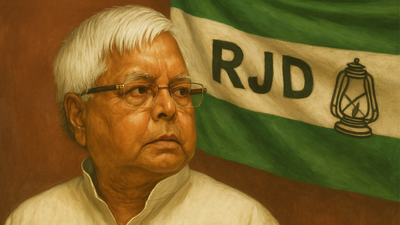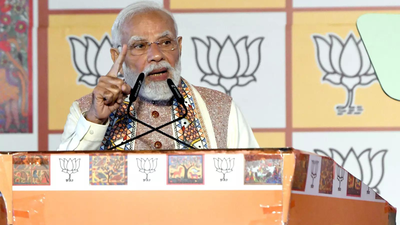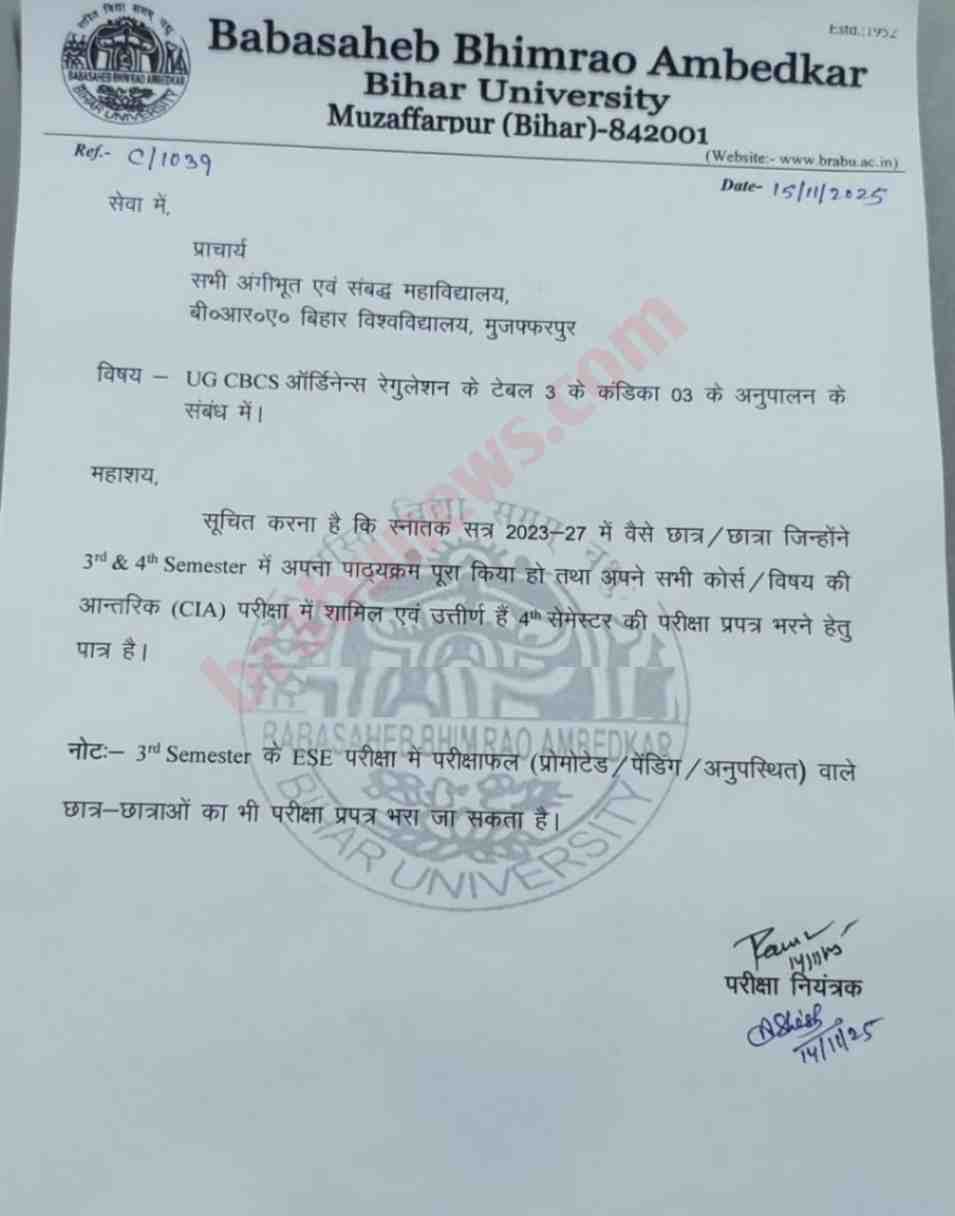NEW DELHI: This election season in Bihar, Lalu Prasad Yadav did not appear at rallies, did not deliver a single speech, and did not record even a short video for supporters. His party, Rashtriya Janata Dal (RJD), delivered one of its weakest performances in decades, winning only about two dozen seats. And yet the results, the campaign rhetoric, and even voter anxieties seemed to orbit around one man who never entered the arena.Lalu’s absence this year may have defined the election as much as his presence once did.The NDA’s sweeping victory, 202 seats between the BJP, JD(U) and allies, was built on a familiar message architecture that repeatedly invoked the spectre of jungle raj. As Prime Minister Narendra Modi said in his victory speech on Friday, Bihar had rejected “jungle raj” and “katta sarkaar,” choosing development and stability instead.What ‘jungle raj’ means todayFor decades, the term carried clear caste-coded undertones. Today, its meaning has broadened. Uday Chandra, writer and field-based researcher of politics and society, notes that “jungle raj functions today less as a narrow upper-caste smear than as a broad anxiety about disorder that cuts across caste lines.” That evolution shaped how women, Extremely Backward Classes, Mahadalits and non-Yadav OBCs understood the stakes of their vote.These groups, Chandra says, “prioritise predictability, personal safety and routine welfare over expressive grievance politics.” Any party that appeared vulnerable to instability began the campaign with a trust deficit. RJD entered the fray knowing it had to battle not only the NDA, but also a historical memory that no longer targeted only upper castes but resonated across the electorate.The party’s messaging, as a result, was pushed into a defensive crouch. “It forces RJD to defend its reputation continuously rather than focusing solely on policy promises,” Chandra explains. “Much of its messaging becomes defensive, explaining, denying, contextualising, which is poor terrain when the median voter wants reassurance, not argument.”The electoral map reflected this tension. Though the RJD won only 25 seats, it recorded the highest vote share, 23%, proving its strongholds of Yadav-Muslim loyalty remain intact. But its reach in competitive seats shrank further. As Chandra puts it, “RJD’s core still turns out strongly but in marginal constituencies the fear-of-disorder payoff favours the side that can credibly promise stability.”“Lalu remains the master symbol of Yadav pride and political memory,” Chandra says. Symbolism, however, is not the same as vote transfer.Lalu’s failure to ensure that the fruits of post-Mandal empowerment were widely dispersed, and not overwhelmingly cornered by Yadavs, also helped the NDA prevent Tejashwi from pulling non-Yadav OBCs and even a section of upper castes toward his promise of development and a break from Lalu-era politics.Internal fragmentation aggravated these shifts. Chandra notes that the Yadav vote “can be split when local notables run their own machines or when personal rivalries are visible.” In several constituencies, Tej Pratap Yadav‘s parallel activity and the presence of strong independents splintered the Yadav vote. These splits did not hurt the RJD in strongholds — but proved lethal in front-line marginals.The father, the sons & the burdenTejashwi campaigned in his father’s name.Tej Pratap campaigned in his father’s shadow.Both carried pieces of the Lalu myth – neither carried it all.For many RJD supporters, Tejashwi is the softer, modern face meant to reassure voters uneasy about a return to chaos. For critics, he remains Lalu’s political heir and therefore the inheritor of jungle raj. He ends up fighting two battles simultaneously: his father’s past and his coalition’s present. And in 2025, he lost both.Why Lalu still dominates the political imaginationLalu’s relevance is not sustained by nostalgia alone. The infrastructure he built still shapes Bihar’s politics. Chandra points to three drivers of his enduring centrality: “historical anchoring, identity brokerage, and a relational patronage network.”His tenure in the 1990s reshaped Bihar’s caste politics in ways that even his opponents acknowledge. His presence still influences alliances, candidate selection and the strategies of regional players. And the organisational networks he built, cadres, kinship links, local intermediaries, continue to be activated during elections.This duality explains why Lalu remained the focal point despite the RJD’s weak performance. Opponents framed their campaign around his record; allies used his legacy as political glue. As Chandra observes, “Opponents weaponise his record to raise risk perceptions among swing voters; allies treat him as an indispensable ledger item in coalition arithmetic.”Also Read: ‘Jab tak samose mein aalu rahega’ – why you can never ignore Lalu YadavA paradox the verdict did not resolveThe NDA ran as much against Lalu as against Tejashwi. The Mahagathbandhan campaigned with Lalu’s symbolism while trying to present a forward-looking message. Voters judged both through the prism of his legacy.The verdict reveals the limits of symbolic politics. The NDA tapped into a broad desire for stability and continuity. Nitish Kumar’s credentials as Sushasan Babu, combined with Modi’s welfare-driven appeal, proved more persuasive than the RJD’s defensive messaging.The RJD struggled to convincingly present itself as a clean break from the 1990s. Tejashwi’s blended pitch, social justice plus governance, was often overshadowed by ambiguity. Was he an inheritor or a reformer? Voters were unsure.Lalu absent, yet unavoidableThe 2025 election may be one of the harshest electoral blows to the RJD, but it also reaffirms something deeper: Lalu Yadav continues to frame the boundaries of how politics is imagined, narrated and contested in Bihar. Every debate about governance, justice, development or security remains tethered to reactions to his legacy.His absence became a presence.This year, Lalu did not campaign, did not speak, did not even wave from a balcony. Yet no NDA rally avoided attacking his past; no MGB rally could afford to ignore his symbolism. He was not on the ballot but still shaped the ballot box.The verdict has sidelined his party, but it has not erased him. Lalu Prasad Yadav remains the axis around which Bihar’s political conversation still turns.







